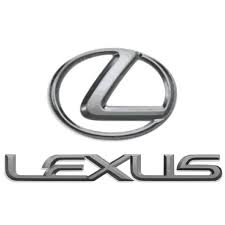SC 300 L6-3.0L (2JZ-GE) (1992)
/Page-1111001.png)
Technical Service Bulletin # BODY015R
Date: 910913
Paint - Prevention/Repair of Acid Rain Damage (Revised)
BODY
015 (REVISED)
SEPTEMBER 13, 1991
ALL MODELS
Title PREVENTION AND REPAIR OF ACID RAIN DAMAGE (REVISED)
CONDITION & CAUSE:
"Acid Rain" is the result of rainwater or other airborne moisture made acidic by industrial chemical impurities in the atmosphere. If these resulting acidic
compounds settle and remain in contact on an exposed vehicle, especially the horizontal areas of the hood, roof, and decklid, significant damage to the
painted surfaces can occur.
PREVENTION OF DAMAGE:
While the quality and durability of paint on Lexus vehicles is continuously being improved, it remains the responsibility of the dealer to protect and
maintain the quality of the vehicle's paint finish after receipt at the dealership. Frequent vehicle washing as often as daily during high heat and humidity
periods should be performed to minimize the potential for paint damage due to acid rain exposure. This is especially important in geographical areas
known for high frequency and concentration of acid rain and industrial fallout.
Inspection & Repair:
Acid rain damage can typically be identified on vehicles by the presence of visible stains on the paint surface which resemble hard water spots. Unlike
water spots however, acid rain damage cannot be removed by washing procedures.
Also, because acid rain can "etch" and soften the paint, normal buffing or polishing repair procedures should not be attempted as this can result in visible
depressions in the paint surface. In those cases where acid rain damage is Minor, neutralization and buffing with a liquid-type paint "finessing" product
may provide an adequate repair. Only specially formulated products such as described in this publication should be used for that purpose.
Moderate damage will usually require neutralizing, color-sanding, as well as buffing. Severe damage extending to a depth greater than 1/2 mil of the
clearcoat on a pearl or metallic color, or 1 mil on a solid color, will require neutralization, sanding and repainting.
Unfortunately, for other than Minor acid rain damage (requiring only a buffing-type repair procedure), there is no simple method of determining the
actual extent (depth) of acid penetration other than color sanding a representative affected area until there is no visible etching or depressions and then
measuring the amount of paint removed with either a magnetic or digital-type Film Thickness Gauge.
The following repair instructions are intended for use by qualified body/paint technicians and should not be attempted by inexperienced personnel.
Repair Procedure For Minor Acid Rain Damage
LIGHT BUFFING ONLY
Materials and supplies necessary for this procedure:
^
Liquid automotive washing soap, baking soda, water pail
^
Recommended buffing/polishing pads:
3M Products
"Finesse-It II" System
-
Wool Pad (yellow, less aggressive) P/N 05705
-
Wool Pad (white, more aggressive) P/N 05700
"Perfect-It" System
-
Foam Pad (Dk. Grey, least aggressive) P/N 05725 (Requires 05717 B/U Pad)
-OR
Meguiar's Products
